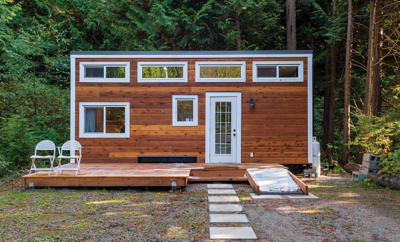
Is Your Home Properly Insured?
Your home could be the largest financial investment of your lifetime. Homeowners insurance is the best way to protect your investment in case disaster strikes and you need to rebuild your home, replace lost possessions or pay the medical expenses for someone who’s injured on your property.
Astandard homeowners insurance policy provides coverage for most types of natural disasters, including fire, hail and lightning. Man-made disasters such as theft and explosions are also covered. If you have a mortgage, your mortgage company will require you to carry enough homeowners insurance to cover the market value of the home. Depending on the structure, this may not be enough to replace the home.
The Insurance Information Institute recommends buying enough insurance to cover your home’s replacement. You can calculate your estimated replacement cost by multiplying local construction costs times your home’s square footage. Add on the value of special features that increase your home’s value, such as additional structures on the property, fireplaces, a kitchen renovation or room additions. You can also hire a professional estimator to walk through your home and provide a replacement estimate that you can pass on to your insurance agent.
Homes with modifications that aren’t up to code often present a problem when it comes to insurance. Rebuilding and bringing a structure up to code after disaster strikes may cost more than just rebuilding. Some homeowners policies have an endorsement on their policy called an Ordinance of Law that will pay extra toward bringing a home up to code while it’s being repaired or rebuilt.
Most home insurance policies also cover items inside the home. The amount of coverage provided varies by policy; average coverage is 50 to 70 percent of the coverage on the structure. To make sure you have enough coverage, create a home inventory and add up the value of each item. In the unfortunate event that you need to collect on your policy, an inventory serves as a convenient list of items to be replaced. At the time you purchase coverage, you’ll need to specify whether you want to insure for the value of your items or for the cost of replacement, which may be slightly more expensive. For example, a ten-year-old washing machine has a much lower value than the cost of buying a new one as a replacement.
Most homeowners policies place a limit on coverage for expensive items like jewelry, art, antiques and collectibles. Coverage for computers and other electronic equipment may also be limited. Additional coverage can be purchased in the form of a personal property endorsement or floater.
Homeowners insurance also provides protection from financial liability in case someone is injured in your home or on your property. The liability portion of a homeowners policy covers medical and legal expenses for lawsuits filed by injured parties. Most policies provide at least $100,000 in liability coverage. Homeowners have the option of purchasing additional coverage to protect other assets from being tapped to cover a personal injury settlement. Higher liability should also be considered for homes with pools, trampolines and other features that present a hazard. If you have a business and store inventory in your home, you may need a separate small business insurance policy to cover it.
Additional living expenses, or ALE, are covered by the average policy. These are the costs you would incur if your home became unlivable, such as food and lodging while you wait for your home to be repaired. The limits on ALE coverage vary by policy. As with other types of coverage, you can usually increase ALE limits by paying extra.
Two types of disasters are specifically not covered by traditional homeowners insurance: flood and earthquake. Flood damage is defined as damage from water that has been on the ground outside rather than damage from plumbing or appliances inside the home. Owners of homes constructed in flood plains are often required to carry additional flood insurance by their mortgage company. Even if it’s not required, insurance experts recommend getting flood insurance if you live near the ocean, a lake or river. Homes in areas that are subject to hurricanes may also benefit from flood insurance. Visit floodsmart.gov to find out if your home is an area covered by the federal government’s National Flood Insurance Program.
Earthquake insurance is optional but recommended for homes in areas at high risk for catastrophic earthquake damage. Rates for earthquake insurance vary by area and are higher in states such as California, where earthquakes are more common.
If you want higher limits in several areas of your homeowners insurance, you may want to invest in an umbrella policy. This type of policy provides excess coverage up to $5,000,000. Excess coverage is paid after the limits of the underlying policy have been satisfied. ■
Sources: iii.org, wsj.com and allstate.com.







